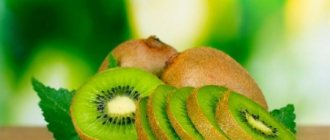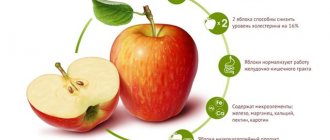Causes of an allergic reaction to citrus fruits
Causes of allergies:
- Citrus fruits grow in equatorial countries. Often the organisms of some people from other areas react pathologically to them.
- The products used to treat fruits against pests to extend shelf life, etc., are harmful to humans and are perceived by the body as foreign.
- Fruits contain large amounts of water and sugar; if stored improperly, fungal mold appears on it; it can also be an allergen. If the fruit itself is not affected by mold, fungal particles from other, infected citrus fruits may become attached to it when stored in one place.
Allergies to citrus fruits can also be caused by:
- tendency to allergic diseases or other immune pathologies;
- congenital, acquired problems with immunity;
- urinary system disorders;
- gastrointestinal disorders.
The occurrence of allergies is also influenced by the amount of fruit consumed.
Causes
Negative symptoms arise not only under the influence of the fruit itself. The body’s reaction is also caused by substances that are applied to foods to make them last longer or grow faster.
Chemical fertilizers are used to feed all crops. Since these substances are used in large quantities, they can accumulate in vegetables and fruits.
Pesticides are used to get rid of pests, fungi and insects. But they also have a negative impact on the human body. The most commonly used substances are:
- Diphenyl. It is used to process all citrus fruits. Thanks to it, fruits do not rot or become moldy for a long time. This substance has no taste or smell, it does not change the color of food, so a person cannot notice it. Even if you thoroughly wash the fruit under running water, you cannot be completely sure that no traces of biphenyl remain on the peel. If you refuse to wash tangerines and oranges, this can be dangerous for the body, since when a person peels the fruit, biphenyl particles will remain on his fingers and it will enter the stomach.
- Fungicides, sulfur dioxide and methyl bromide. Before sending products to other countries, they are treated with these substances. They help get rid of all pests, prevent rotting and mold formation. There is no exact information that these components will not penetrate the human body, will not accumulate and have a destructive effect.
Citrus fruits themselves contain substances such as thiamines and salicylates. The largest amounts of them contain tangerines and oranges. They often cause a negative reaction from the immune system, especially against the background of stomach diseases.
Allergy symptoms
Symptoms appear within 10-20 minutes and last up to 1 hour.
Skin manifestations
The following symptoms appear:
- itching;
- urticaria (see photo);
- dermatitis;
- eczema;
- pimples that look like mosquito bites;
- burning in the area of red spots;
- irritation.
Most often, symptoms appear on the face, then spread throughout the entire skin of the body.
Digestive system symptoms
The following signs appear from the digestive system:
- cramps in the stomach;
- diarrhea;
- nausea;
- flatulence;
- pain in the intestines;
- heartburn;
- vomit;
- bloating;
- constipation.
Symptoms in adults and children
The first signs are associated with skin disorders:
- irritation, itching, upcoming peeling – allergic dermatitis;
- rashes on the face;
- the appearance of cold symptoms – cough, stuffy nose;
- swelling;
- redness of the eyes;
- nausea, vomiting.
The following is characteristic: the stomach immediately reacts to the irritant (tangerines). Heaviness occurs, turning into nausea and vomiting.
In children, allergies are more difficult to treat, so you should not give the terrible citrus from childhood.
Fruit is introduced into the diet evenly, no more than slices per day. First, you should definitely consult a doctor: your child may have a personal intolerance to tangerines. If the body does not object, the portion is increased - also little by little.
Children cannot control the amount of citrus fruits they eat, and during a big feast no one pays attention to this. Often the blame lies with adults for simply not being able to look after the child who was gorging himself on tangerines.
Remember that he will use them until he gets sick, and the consequences are not good. Anaphylactic shock ends in resuscitation.
What does an allergy to tangerines look like? Look at the photo.
Important!
During pregnancy, it is worth leading a doubly prudent lifestyle. If you suddenly have an allergic reaction from tangerines, then expect it to be passed on to your child. The genetic factor in the development of intolerance cannot be brushed aside as unnecessary.
Features of allergy to citrus fruits in a child
Children are more prone to allergies than adults due to a weak immune system. The symptoms are the same, but have different consequences.
Children are susceptible to this type of allergy in the following cases:
- excessive consumption of large quantities of lemons or other citrus fruits;
- the disease is inherited;
- improper functioning of the child's immune system.
In children, lesions of the skin and respiratory systems predominate over other allergy symptoms. The most dangerous thing is eating oranges, tangerines and kiwis, due to their high saturation with active enzymes.
Allergens in tangerines and their potential cross-reactivity
The following allergens have been characterized:
| Proteins-allergens | Cross reactivity |
| Cit r 3 is a lipid transfer protein (LTP). Present in peel and pulp | Mandarin contains a lipid transfer protein, so there is a cross-reaction with other BPLs, in particular citrus fruits Cit s 3 (orange) and Cit l 3 (lemon). |
| Profilin | Cross-reactivity between tangerine and other profilin-containing products and plants is possible. |
| Protein 30 kDa | Possible cross-reaction with peaches, guavas, bananas, tangerines, strawberries. |
| Seed globulin (storage protein, citrine). Contained in seeds. | All citrus seeds are completely cross-reactive with each other. Partial cross-reaction with peanuts is also possible. |
In addition, extensive cross-reactivity between different individual Rutaceae species (particularly the genus Citrus) is to be expected.
How to distinguish an allergy from a pseudo-allergy?
Pseudo-allergy is an intensified reaction to certain substances that enter the human body from the outside, with symptoms inherent in a true allergy. There are no immunological reactions, but the inflammatory process occurs due to a failure of histamine metabolism, abnormal activation of complement, and other mechanisms. Pseudoallergy develops due to excessive consumption of a substance that causes intolerance.
Unlike a true allergy, it does not contain an antigen due to which immunoglobulins are produced. It begins immediately after the appearance of inflammatory mediators in the cells. Pseudoallergy is more common than true allergy.
The two types of allergies are similar in symptoms, but there are characteristic differences:
- with a pseudo-allergy, a larger amount of citrus consumed will lead to a deterioration in the person’s condition, while with a true allergy, there is no difference in the dose of the allergen;
- there is no anaphylactic shock or angioedema; with true allergies, such symptoms occur constantly;
- a general reaction to similar substances is not observed in pseudo-allergies, but in true allergies it progresses after the introduction of similar allergens;
- true allergy is inherent in all family members, but only one person can suffer from pseudo-allergy;
- elimination of the allergen is characteristic only of true allergies;
- atopic reactions occur more often with true than with pseudoallergy.
Allergens in Oranges and Potential Cross-Reactivity
The following allergens have been isolated and characterized in orange:
| Allergen | Characteristic |
| Cit s 1 – germin-like glycoprotein, thermostable | It is a major allergen and was isolated from orange peel and pulp. |
| Cit s 2 – profilin | One of the main allergens. Is a cross allergen. The main manifestation of the reaction is oral allergic syndrome. |
| Cit s 3 – lipid transfer protein (LTP), thermostable | Associated with severe systemic reactions. |
| Cit s IFR – isoflavone reductase | Bound to Bet v 6 protein from birch |
Cross reactivity
First of all, there is extensive cross-reactivity between individual members of the genus.
The presence of profilin Cit s 2 can lead to cross-allergy with other products containing it, as well as plant pollen. It is worth noting that this reaction is mainly manifested by oral allergic syndrome .
| Allergen | Cross react |
| Profilin | Representatives of the Rosaceae family, hazelnuts, melons and watermelons, tomatoes, pineapple, citrus fruits and bananas. |
There is an assumption that an allergy to melon, watermelon, tomato, pineapple, banana or orange can be considered a marker of hypersensitivity to profilin.
The lipid transfer protein Cit s 3 can lead to cross-allergy with the main peach allergen Pru p 3, as well as with other products containing it.
The PCBER protein is a homologue of the Bet v 6 protein of birch and is present in many products:
| Allergen | Cross react |
| PCBER | Apple, peach, orange, lychee, strawberry, persimmon, zucchini, carrot |
In addition to the above, there is cross-reactivity between peanuts and citrus seed proteins.
Treatment options
When treating, the first step is to exclude citrus fruits and products containing citric acid and juice from the diet.
Drug treatment
To eliminate the symptoms of allergies to lemons and other citrus fruits, the doctor prescribes 1st generation antihistamines : Fenkarol, Diphenhydramine, Tavegil, Diazolin, Suprastin, 2nd generation : Clarotadine, Kestin, Lorotadin, Ceterizin, Claridol, Zyrtec, Claritin, Lomilan, Rupafin and 3rd generation : Fexadin, Erius, Telfast, Dezal. The differences between these drugs are the side effects, their quantity and danger, and the presence of a sedative. With each subsequent generation, the drug becomes safer.
To treat symptoms, local symptomatic therapy is used:
- For itching, urticaria, dermatitis and other skin diseases, hormonal ointments . They are a last resort treatment as they have side effects. They are used strictly as prescribed by a doctor.
- For stomach spasms, diarrhea, nausea, etc., enterosorbents based on activated carbon . The drugs reduce the number of toxins that cause problems in the digestive system.
- For nasal congestion, cough, sore throat, etc., use antihistamines , vasoconstrictors , hormonal sprays and drops.
- Sorbents are used to remove allergens from the human body. It adsorbs antigen and toxic metabolic residues, complicates their absorption, reduces the impact of allergic reactions from the outside, acting as a detoxifying agent.
Folk remedies
Traditional methods serve as a harmless treatment for citrus allergies without the help of doctors.
Recipes to fight the disease:
- Dilute the following herbs in 250 ml of water: centaury, chamomile, dandelion root, corn silk, St. John's wort. Leave it to knock. Drink the prepared tincture 3 times. half a glass a day before meals. There is a chance to recover from citrus allergy if you take the medicine regularly.
- A tincture of string, oak root and chamomile will relieve skin diseases.
- Drink blackhead decoction on an empty stomach 3 times a day.
How to avoid the problem
To reduce the likelihood of repeated attacks of allergic reactions, it is advisable to completely exclude this product from your diet.
If a person has a history of allergies, especially if there have been cases with a complicated course, he should always have an antihistamine with him in order to help himself in time.
If episodes of hypersensitivity have appeared at least once, there is no need to postpone visiting an allergist.
Many people underestimate this disease and do not take its symptoms seriously. But this is a mistake. This condition poses a danger to the body. Some people experience anaphylactic shock or swelling of the airways, which can lead to suffocation.
Diet features
When treating an allergy to citrus fruits, it is necessary to follow a diet that excludes all citrus fruits from the diet. You should also avoid other foods that you are allergic to: chocolate, eggs, milk, nuts, etc.
In the diet, it is necessary to categorize foods from the most allergenic product to the least. The following rules must also be observed:
- fractional meals;
- remove products containing allergens;
- to drink a lot of water;
- read the ingredients of products;
- record reactions after eating food;
- reduce the consumption of spicy and sweet foods;
- If there are new foods in your diet, try them in the morning, monitoring the body’s reaction.
Possible cross-reactions.
Cross-reaction occurs because the antigens of the products are similar to each other. An allergic reaction may occur to:
- plant pollen;
- other fruits and vegetables;
- less often on products of animal origin;
- fish and seafood;
- peanuts, soybeans;
- egg white.
Preventive recommendations
In case of a negative response to a citrus fruit and the manifestation of allergy symptoms, the best preventive measure is the rare and minimal consumption of grapefruits, tangerines, oranges, lemons and other citrus fruits in your diet, and sometimes the best option is the complete exclusion of one or another useful, but dangerous for fetal health. And, of course, do not forget to be careful when choosing a citrus fruit - the degree of maturity and integrity of the peel of the sunny “fruit” are very important.











